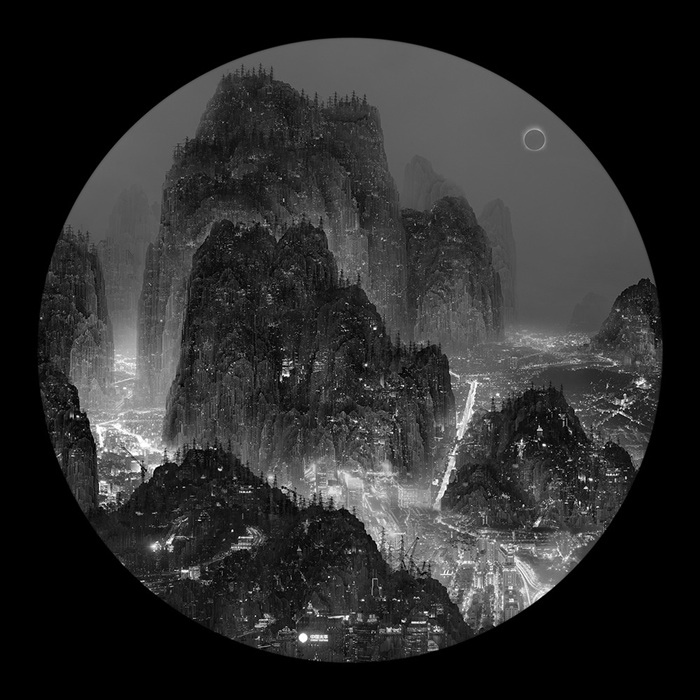Everything is a balance between the energies that govern the world.
We could simply trace them in the 5 basic elements of Feng Shui: wood, metal, air, water, fire. Yang Yongliang inspired by the ancient pictorial tradition of SHAN SHUI prints, with a naturalistic theme, imbued with philosophical and religious meaning, creates worlds that unite three elements: photography, digital manipulation and composition.
This young artist thus merges the millenary heritage of the Shan-Shui to talk about today’s problems, such as urbanization, globalization and the relationship of Man with Nature and the impact on it.
Yang creates dreamlike worlds that are evidently digital but, at the same time, with an ancient flavor, with the intention of uniting tradition and contemporaneity in a suggestive and very personal mix. Yang perfectly manages the contradictions between ephemeral and permanent, beautiful and ugly, ancient and new, to make a completely poetic and harmonious work where there is also a subtle cynical irony that reveals hidden dangers behind apparent peaceful and silent landscapes, out of time. “Silent Valley” – Valleys of silence – he calls them.
Silence that evokes the image of “Zabriskie Point”, in the desert of California’s Death Valley, made famous in 1970 by Michelangelo Antonioni, master of Italian cinema, who made it the location of the homonymous film (posthumous cult). The place is totally devoid of life due to drought and salt. Everywhere, no plants. There, even time seems to have vanished, motionless, always the same. So it is in the Yang valleys, except for the presence of the protagonist Zen philosopher, who represents the last surviving tradition of a now extinct culture. Almost condemned to live an eternal wait, a suspended time. An infinite “near future” that looms but does not get close. In the same way, as in “Zabriskie point”, life is hidden behind the apparent immobility, sometimes in its most violent and dangerous forms. As in the work entitled “Silent Valley_Wolf and landmines”, in which the helpless and unaware philosopher finds himself on a rock, surrounded on closer inspection by a minefield, signaled by a camouflaged warning sign and, cofused in the dark and the lights, a wolf. Or again, in the work “Silent Valley_A snake and granade”, in which the same philosopher sitting in calm contemplation of the horizon (dominated by skyscrapers, symbol of civilization, menacing) does not realize he is in a deadly grip, between a snake oncoming and a smoking grenade. Yang thus achieves a perfect balance between fragility and danger, beauty and cruelty, in an aesthetic that is also contemplation and self-examination of various social and cultural themes, such as the distortion of traditions and the violence that some cultures have suffered due to other cultures or the new that is advancing. The philosopher looks from afar at the buildings on the horizon, which now completely cover the mountains. A zen expectation of what inevitably is and will soon be, in spite of what has already been. A “silent” wait that dominates and names the valley, whose weight however has the same strength as the imagination, literally explosive in the last scene of Antonioni’s film which, on the notes of a psychedelic music by Pink Floyd, makes in the air the villa among the desert hills. Life and death. Ancient and new.
An eternal Yin and Yang, the balance of energies that govern the world.









